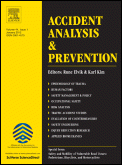
In this paper, macroscopic road safety trends in Greece are analyzed using state-space models and data for 52 years (1960–2011). Seemingly unrelated time series equations (SUTSE) models are developed first, followed by richer latent risk time-series (LRT) models. As reliable estimates of vehicle-kilometers are not available for Greece, the number of vehicles in circulation is used as a proxy to the exposure. Alternative considered models are presented and discussed, including diagnostics for the assessment of their model quality and recommendations for further enrichment of this model. Important interventions were incorporated in the models developed (1986 financial crisis, 1991 old-car exchange scheme, 1996 new road fatality definition) and found statistically significant. Furthermore, the forecasting results using data up to 2008 were compared with final actual data (2009–2011) indicating that the models perform properly, even in unusual situations, like the current strong financial crisis in Greece. Forecasting results up to 2020 are also presented and compared with the forecasts of a model that explicitly considers the currently on-going recession. Modeling the recession, and assuming that it will end by 2013, results in more reasonable estimates of risk and vehicle-kilometers for the 2020 horizon. This research demonstrates the benefits of using advanced state-space modeling techniques for modeling macroscopic road safety trends, such as allowing the explicit modeling of interventions. The challenges associated with the application of such state-of-the-art models for macroscopic phenomena, such as traffic fatalities in a region or country, are also highlighted. Furthermore, it is demonstrated that it is possible to apply such complex models using the relatively short time-series that are available in macroscopic road safety analysis.
| ID | pj76 |
| Manuscript | |
| DOI | |
| Tags | accident analysis, statistical modelling |







